Description, varieties, cultivation of petunia Gioconda
Petunias of the Mona Lisa series delight the eye with lush flowering and a variety of shades: scarlet, white, blue, light blue, purple, yellow, peach, and orange combinations. This is an annual crop with a male type of flowering, which, with proper care, lasts 12 months. Let's look at the features of growing petunia Gioconda.
General description of petunia series Gioconda
Petunia Gioconda F1 - a hybrid form of the plant that has made a huge breakthrough in floriculture. Its uniqueness lies in the myriad of small or large flowers that literally cover the bushes. Breeders managed to achieve this result thanks to the absolute sterility of flowers that do not produce seeds.
Mona Lisa enters the flowering period at the beginning of the growing season. With systematic care, it lasts 12 months, despite the hybrid belonging to one-year crops.
The shades of the inflorescences are strikingly diverse:
- bright orange;
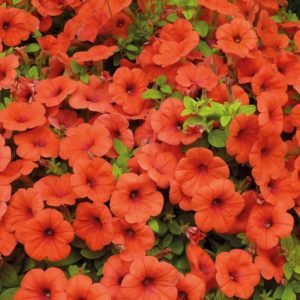
- burgundy-scarlet;
- white;
- yellow;
- peach;
- blue;
- purple;
- pastel pink.
Petunia has great growth power. The branching stems reach 1 m in length and, when grown in open ground, cover the ground with a continuous flower carpet. The height of the stems reaches 20 cm. The diameter of the flower is 6–9 cm. When grown in pots the shoots cascade over the border.
The hybrid is resistant to low and high temperatures, capable of growing and developing in conditions from –8 to +40°C.The flower withstands bad weather and sudden changes in air temperature. When frosts occur, the plant slows down its growth slightly, but the cold does not lead to its death.
Hybrid Gioconda F1 competes with many popular varieties of ampelous petunia due to the even distribution of flowers on the stems. The culture feels equally good at the seedling stage and when transferred to a permanent place.
Reference. At the initial stage of formation, the flowers look strong and strong and bloom quickly.
Among the disadvantages of culture are the following:
- in an open pot, the flower grows unevenly, so it is not always possible to create an aesthetic composition;
- due to the large number of climbing stems, it is difficult for the plant to maintain its shape;
- the buds are located unevenly: sometimes there are a lot of them in one place, and not at all in another.
The hybrid is characterized by increased resistance to rot and fungal diseases, which allows it to be grown in regions with different climates.
Varieties
Petunia Gioconda F1 is a multifaceted crop. In addition to a variety of colors, there are several forms of the hybrid.
Multi-flowered creeping cascading
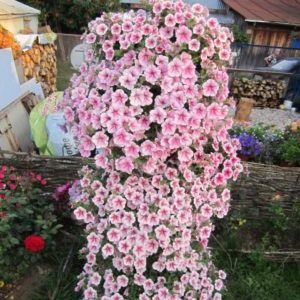
Reviews of Petunia Gioconda multiflora creeping cascading are very positive. Flowers come in purple, scarlet, salmon and neon colors. This variety is grown in hanging baskets, plant pots and open areas. The stems of the plant are powerful, densely branched, and quickly adapt to sudden fluctuations in air temperature. This species is resistant to rot, so it is often grown in open ground for creating floral carpets.
Mini
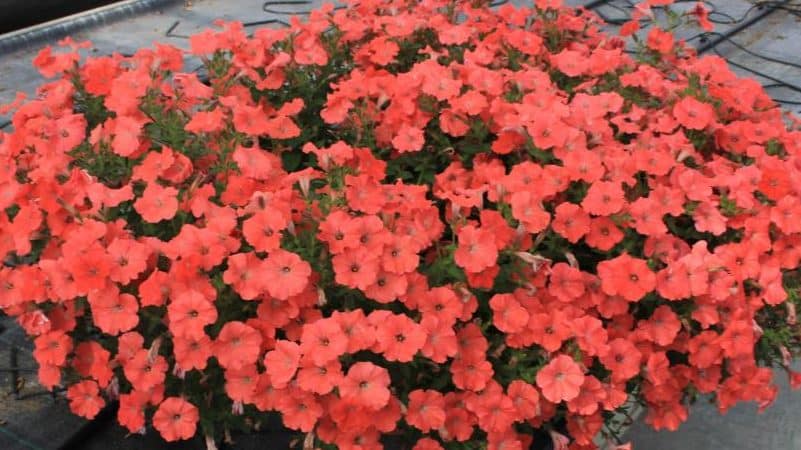
Gioconda variety Mini is represented by a plant with small flowers that bloom from the center to the edge. The plant is resistant to rain and wind.The leaves are constantly green, the edges never turn yellow.
Baby
The variety retains all the characteristics of the Gioconda hybrid, but is distinguished by its smaller bush and flowers. Color options: red, purple, blue, white, mix of red and white. The culture is used to create flower beds and is grown as a container plant.
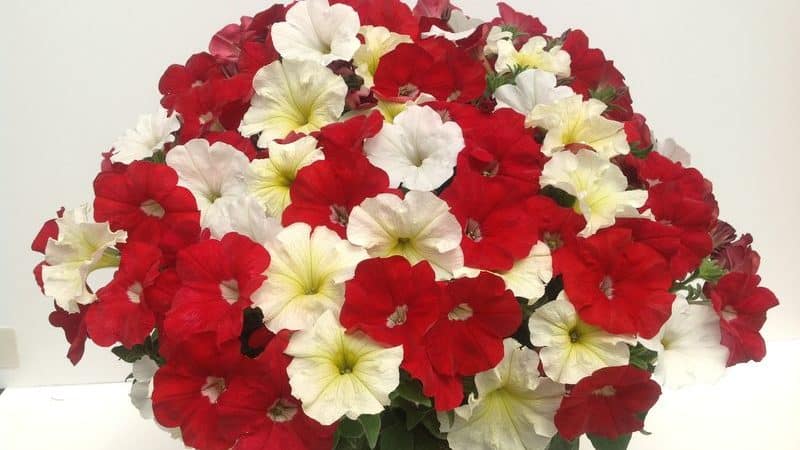
Miniflora
The plant blooms profusely due to intensive branching. Period flowering is 12 months. Petunia grows up to 1 m in diameter. The height of the bush is 25–30 cm. The flowers are blue, each size is 5 cm.
Multiflora
Petunia multiflora Gioconda retains all the characteristics of a hybrid and is distinguished by a variety of shades: blue, white, white-blue, white-violet, purple, red, white-yellow, fuchsia.
Sea Symphony
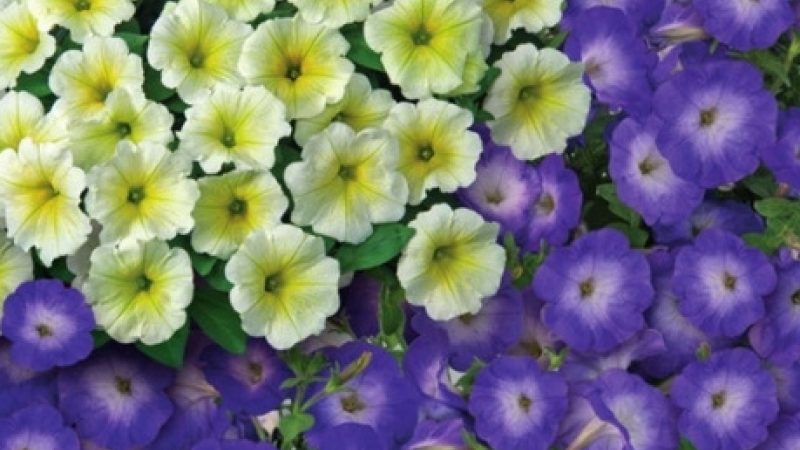
Petunia Sea Symphony F1 is a hybrid series characterized by dense, cascading stems with numerous flowers. The culture enters the flowering period in early June. New flowers appear until the first frost. The length of the stems is 80–100 cm.
The hybrid is used to decorate multi-story systems. Large white and blue flowers create an excellent composition. When the seedlings are spaced 30 cm apart, the stems creep up 20 cm and create graceful mounds. A gap of 60 cm between seedlings allows you to create a long, uniform mat for decorating an alpine slide or rock garden.
Petunia supercascade Gioconda white
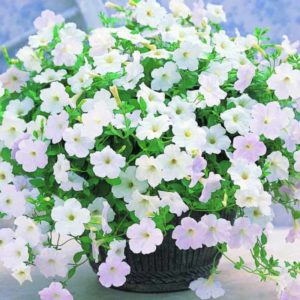
Petunia Gioconda white super cascade, Fortunia type from Gavrish - a unique hybrid with a powerful cascade of greenery and flowers. The plant is characterized by high growth vigor and quickly fills a space with a diameter of 1 m. The flowering is so lush that greenery is not visible.The number of flowers remains unchanged until the onset of frost.
When planting seedlings at intervals of 30 cm, the stems stretch upward and create a “cushion” of white flowers 20 cm high. Strong stems maintain the shape of the bush throughout the season. When planted at a distance of 60 cm, the stems grow in the form of a carpet with a diameter of 1 m. The hybrid is recommended for growing in hanging flowerpots and balcony boxes, as numerous hanging stems form a flowering waterfall.
Saturn Blue
Variety Saturn blue F1 (Saturn Blue) is a plant with many blue flowers. It is used to decorate flower beds in the garden, terraces, balconies, loggias. Low bushes - only 20 cm - cover the ground with a colorful carpet up to 1 m in diameter.
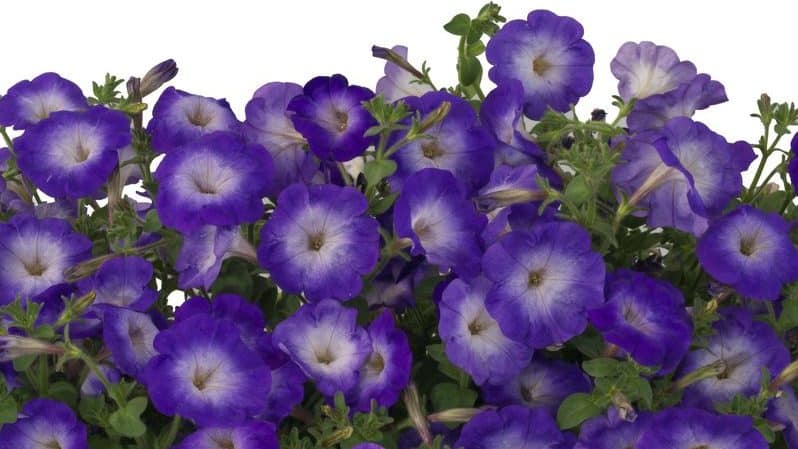
Star Mix
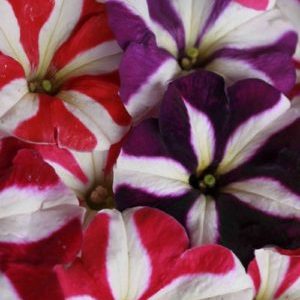
A variety of hybrid with flowers of amazing beauty: thin white veins are visible on a purple background. The plant is characterized by intensive branching and great growth vigor. Flowers are formed continuously throughout the growing season. Starmix is suitable for growing in open ground in the form of a flower carpet with a diameter of 1 m, hanging flowerpots and balcony boxes.
Features of growing petunia Gioconda
Gioconda is known for its ease of care and high adaptive qualities; if agricultural practices are followed, it produces amazing results.. To form long vines, seedlings are planted at intervals of 60 cm, to form cascades - up to 30 cm.
Purchased seeds or the finished seedlings are planted in fertile soil mixed with humus and sand in a ratio of 3:1:1. The substrate should be loose and breathable for better nutrition of the root system. The soil acidity is neutral - 6.5–7 pH. Too acidic and alkaline soil mixture is not suitable.Acidity is checked with litmus tests; if necessary, dolomite flour or slaked lime is added to bring it to normal.
Reference. Black and yellow Mona Lisa is grown on any type of soil, prepared according to the recommendations.
Caring for Petunia Gioconda involves:
- choosing the location of a flower bed or flowerpot;
- regular moistening and fertilizing;
- protection from insects and diseases.
Petunia prefers illuminated areas and is not afraid of direct sunlight. The duration of daylight should be at least 11 hours. To maintain lush flowering, it is recommended to maintain the temperature in the range of +20...+22°C.
Gioconda is more sensitive to overwatering than to moisture deficiency. The plant is watered once a week in moderate weather and twice a day (morning and evening) in hot weather.
Complex formulations with nitrogen, potassium and phosphorus are used as fertilizers, which support the plant throughout the growing season. “Agricola”, “Ideal”, “Bona Forte” are suitable. Fertilizers are applied once every 2 weeks.
Petunia buds are sensitive to heavy rain and wind. Damaged flowers are carefully torn off or cut off with nail scissors, and new ones quickly appear in their place. The soil is kept loose. When growing in open areas, weeds are regularly pulled out.
Gioconda has a strong immune system and rarely gets sick. Sometimes chlorosis occurs due to too hard water for irrigation. As a preventative measure, it is recommended to use fertilizing and iron supplements.
If a spider mite appears on the bushes, it is washed off with water, and the plants are pollinated with crushed sulfur.A solution of nicotine sulfate with shavings of laundry soap will help get rid of aphids. The whitefly is destroyed with a Permethrin solution. Bushes are treated every 3 days.
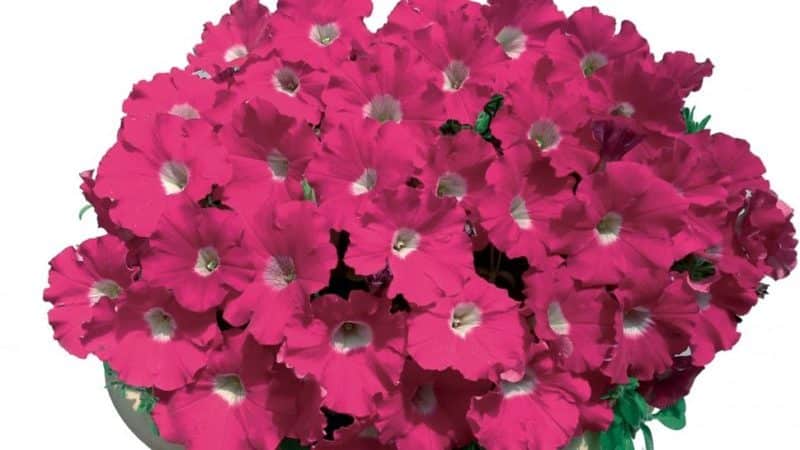
Reviews
Flower growers are delighted with the lush flowering of Petunia Gioconda F1 and recommend it to anyone who wants to decorate a balcony, veranda or garden plot.
Margarita, Liski: “Baby Gioconda Blue sowed her first miniflora petunia at the dacha last year and was pleased. I watched the lush flowering all summer, until the first frost. Surprisingly, the number of flowers did not decrease - new buds appeared in place of the faded ones.”
Olga, Bryansk: “I have been growing petunia Gioconda for several years in a row and recommend it to everyone I know. The plant is absolutely unpretentious and only needs regular watering and feeding. I sow the seeds directly in a pot with soil and wait for sprouts. The growth power of this hybrid is amazing: the branches are literally strewn with buds and hang down in cascades. If you plant seedlings in open ground, you can get a flower carpet.”
Elena, Zelenograd: “I love Gioconda for her unpretentiousness and incredible beauty. Scarlet, blue, purple, white, orange flowers, as well as mixes of various shades, decorate the balcony. The plant blooms long and profusely, and is not afraid of either heat or cold. Most often I plant petunia miniflora baby Gioconda. I like its small flowers on long shoots.”
Conclusion
Petunia creeping cascade Gioconda is a hybrid form of plant, popular among gardeners due to its lush and continuous flowering and ease of care. The bushes can withstand extreme heat up to +40°C and frost down to –8°C. Petunia is used to decorate garden plots, verandas and balconies.Care comes down to regular but moderate watering, fertilizing and loosening the soil.